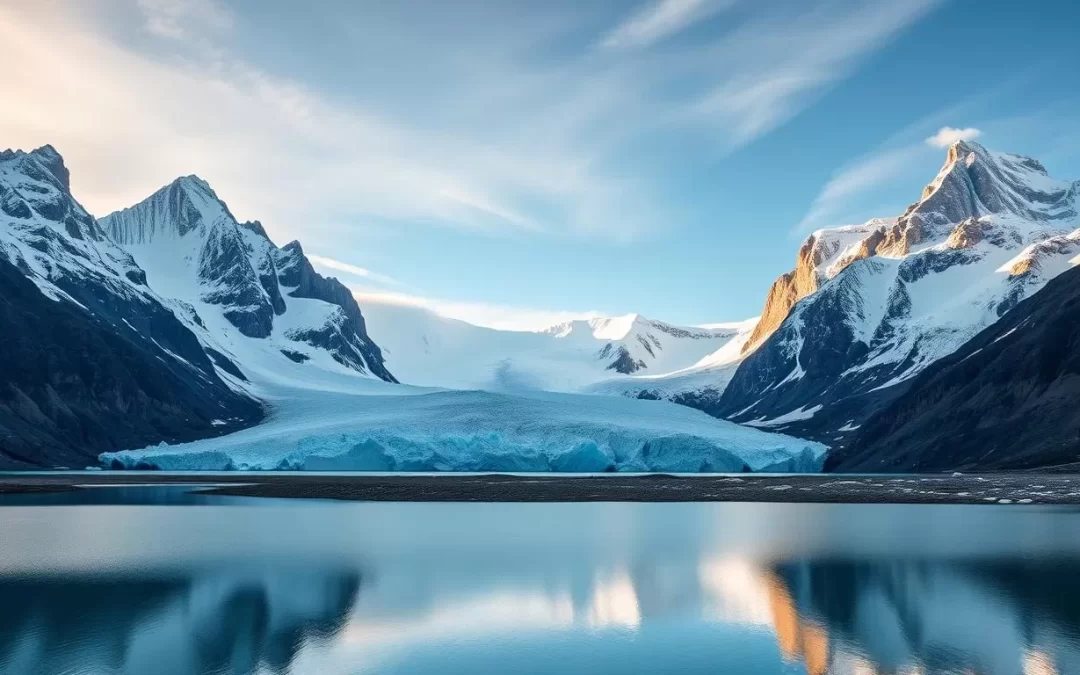
Los Glaciares National Park, Argentina: Best Things to Do – Top Picks
Welcome to one of Patagonia’s most breathtaking natural wonders – a UNESCO World Heritage site that will leave you awestruck with its majestic ice fields and towering mountains.
This comprehensive guide will walk you through everything you need to know about visiting this Patagonian paradise. You’ll explore the iconic Perito Moreno Glacier, discover hidden hiking trails, and experience unique adventures.
With 47 major glaciers and approximately 190 smaller ones, this destination is a must-visit for any travel enthusiast. Whether you’re an adventure seeker or a nature lover, you’ll find something that suits your taste in this incredible national park.
Discovering Los Glaciares National Park
In the vast expanse of Argentinian Patagonia lies Los Glaciares National Park, a haven for glaciers and wildlife. Established in 1937, it is Argentina’s largest national park, covering an impressive 2,807 square miles (7,269 square kilometers) in the Santa Cruz Province.
The park’s name is derived from the massive ice cap in the Andes that feeds 47 major glaciers, making it the largest continental ice field outside of Antarctica and Greenland. You’ll find the park divided into two distinct areas: the northern section centered around the picturesque town of El Chaltén with its iconic Mount Fitz Roy, and the southern section featuring the world-famous Perito Moreno Glacier near El Calafate.
The landscape is characterized by dramatic mountain peaks, pristine lakes with milky turquoise waters, ancient forests, and the magnificent glaciers that give the park its name. Los Glaciares was declared a UNESCO World Heritage Site in 1981 due to its exceptional natural beauty and its importance as a scientific site for studying glacial activity.
| Feature | Description |
|---|---|
| Established | 1937 |
| Size | 2,807 square miles (7,269 square kilometers) |
| Major Glaciers | 47 |
| UNESCO World Heritage Site | 1981 |
The park represents one of the few places on earth where you can witness active glaciers in a relatively accessible setting, making it a unique destination for both casual visitors and serious nature enthusiasts. Beyond its natural beauty, the park is home to diverse wildlife including guanacos, pumas, Andean condors, and the endangered huemul deer.
How to Get to Los Glaciares National Park
Los Glaciares National Park is accessible through several travel options, making it a versatile destination for travelers. The gateway to this magnificent park is typically through the town of El Calafate, which boasts an international airport receiving regular flights from Buenos Aires and other major cities in Argentina.
If you’re traveling from abroad, you’ll likely fly into Buenos Aires first, then take a domestic flight to El Calafate. This domestic flight, operated by Aerolíneas Argentinas and other carriers, takes approximately 3 hours. For budget travelers, long-distance buses connect El Calafate with other Patagonian destinations like Bariloche (24 hours), Puerto Natales in Chile (6 hours), and El Chaltén (3 hours).
Once in El Calafate, you have several options to reach the park. Public buses run regularly during the high season (October-March), with companies like CalTur and Chaltén Travel offering round-trip services. Renting a car gives you the most flexibility and allows you to explore at your own pace – the drive from El Calafate to the Perito Moreno sector takes about 90 minutes on well-maintained roads.
- Public buses: Regular services during high season.
- Renting a car: Offers flexibility and scenic drives.
- Organized day tours: Convenient but less flexible.
Many visitors opt for organized day tours that include transportation, which is convenient but limits your time and freedom within the park. If you’re heading to the northern section near El Chaltén, you can take a bus from El Calafate (3 hours) or arrange ground transportation after flying into El Calafate.
| Travel Option | Duration | Frequency |
|---|---|---|
| Flight from Buenos Aires to El Calafate | 3 hours | Regular |
| Bus from El Calafate to Los Glaciares | 90 minutes | Multiple times a day |
| Bus from Puerto Natales to El Calafate | 6 hours | Available |
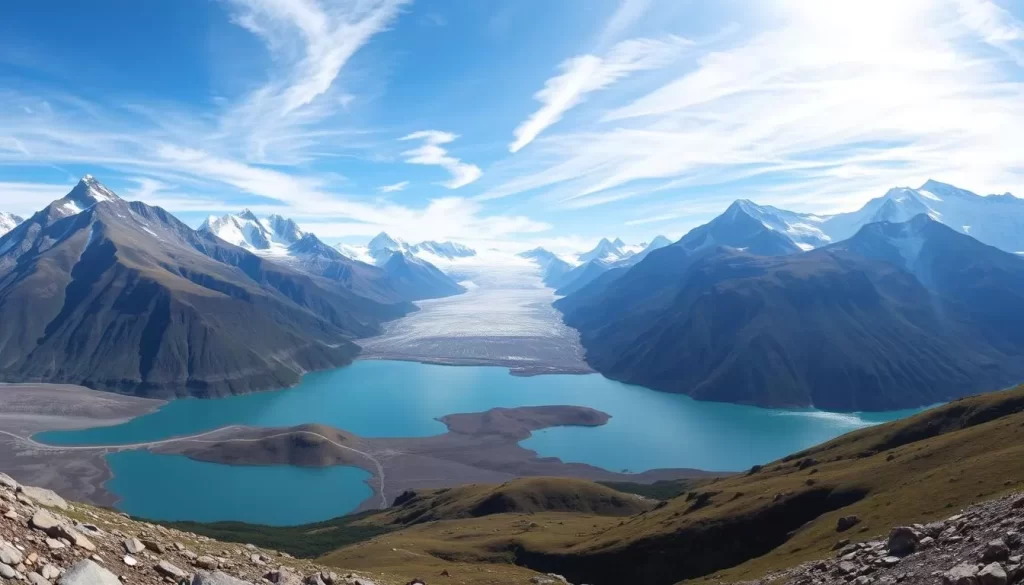
For those visiting from Chile, there are direct buses from Puerto Natales to El Calafate, making it possible to combine Los Glaciares with Torres del Paine National Park. Planning your travel to Los Glaciares National Park in advance ensures a smooth and enjoyable journey to this incredible destination.
Best Time to Visit Los Glaciares National Park
To make the most of your visit to Los Glaciares National Park, it’s crucial to choose the right time of year. The park, known for its stunning glaciers and breathtaking landscapes, offers different experiences based on the season.
The prime time to visit Los Glaciares National Park is during the Patagonian summer, from November to March, when you can enjoy longer daylight hours, milder temperatures, and more reliable weather conditions.
- December and January are the peak months with the best weather but also the largest crowds and highest prices, with temperatures ranging from 50-70°F (10-20°C) during the day.
- The shoulder seasons of October-November and March-April offer a good balance between decent weather and fewer tourists, though you should be prepared for more unpredictable conditions.
- If witnessing ice calving from the Perito Moreno Glacier is high on your list, visit during the warmer months when this spectacular natural phenomenon is more frequent.
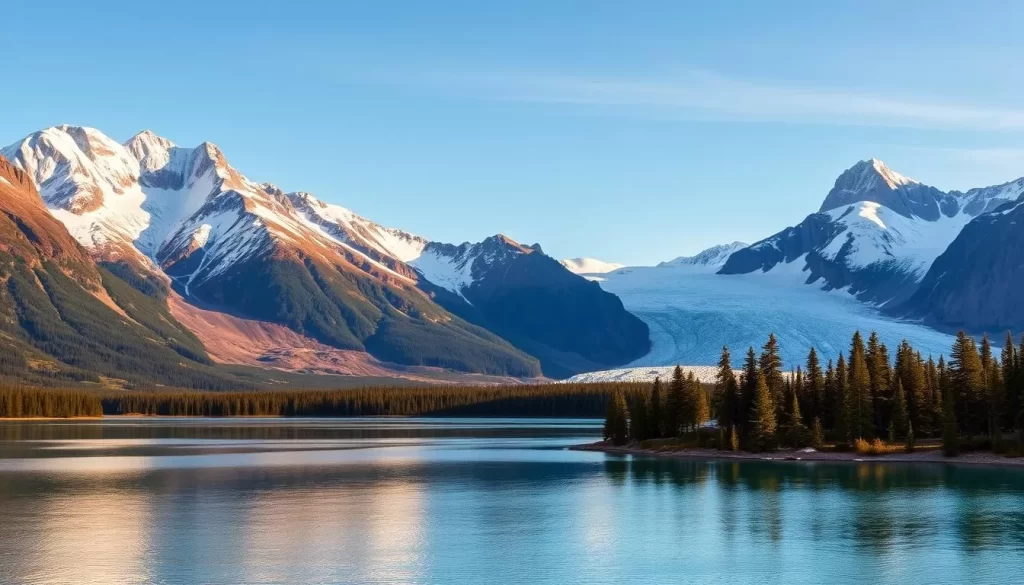
Entrance Fees and Practical Information
Before you plan your visit, it’s essential to know the entrance fees and other practical information. The entrance fee for foreigners is approximately $29 USD, subject to change due to Argentina’s fluctuating economy.
- Make sure to bring cash in Argentine pesos as card machines at the entrance may not always work, especially during peak visitor days.
- The park has no daily visitor limits, so there’s no need to book your visit far in advance, though accommodations in nearby towns should be reserved well ahead during high season.
Understanding these details will help you make sure your trip is well-planned and enjoyable.
Exploring the Perito Moreno Glacier
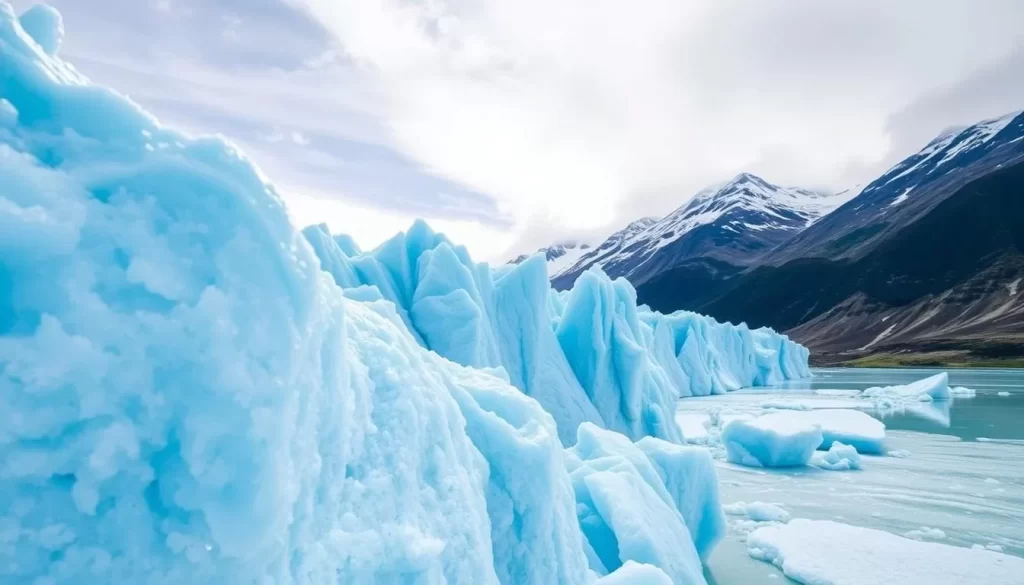
The Perito Moreno Glacier, with its towering ice walls and stunning blue color, is a spectacle like no other. Located in the heart of Los Glaciares National Park, this massive 97 square mile ice formation is one of the few advancing glaciers in the world. As you approach the glacier, you’ll be struck by its sheer scale and beauty.
What makes the Perito Moreno Glacier truly special is its accessibility. A sophisticated system of walkways allows you to observe the 240-foot ice wall from various angles and distances, providing spectacular views without needing special equipment. The glacier’s dynamic nature is also a major draw, as it approximately every four years creates a natural dam that eventually ruptures in a breathtaking spectacle.
Ice Trekking on Perito Moreno
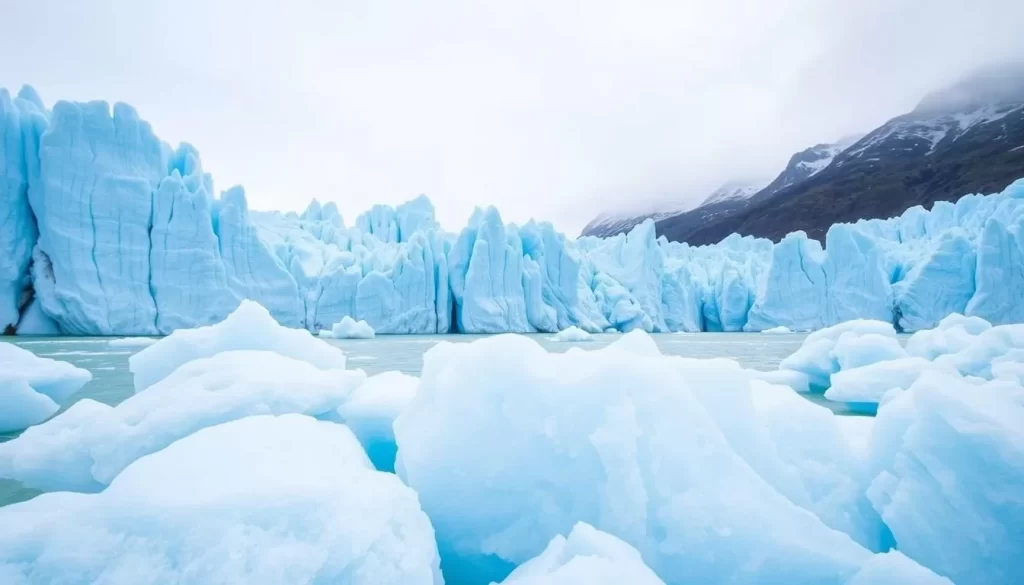
For the most immersive experience, ice trekking tours allow you to actually walk on the glacier’s surface. The Mini Trek, available from mid-July to September, is perfect for beginners and includes a 2-hour guided walk on the ice. During the trek, you’ll be equipped with crampons and led by experienced guides who will teach you how to navigate the icy terrain safely while explaining the glacier’s formation and ecology.
The more challenging Big Ice Trek, available from mid-September to April, takes you deeper into the glacier for a 3.5-hour exploration, offering access to stunning ice caves and formations that few visitors get to see.
Boat Tours to Perito Moreno
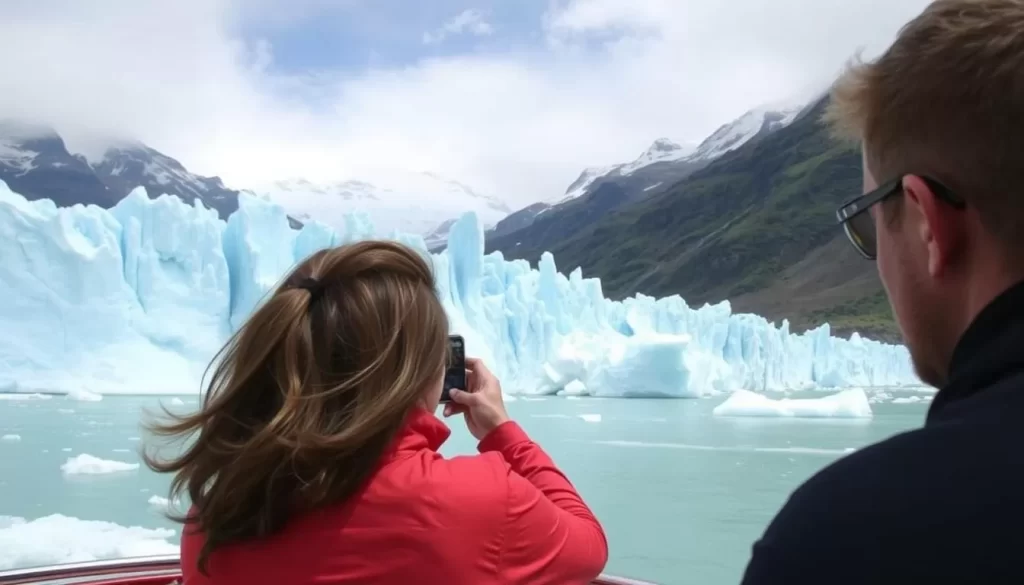
Boat tours provide another perspective, bringing you remarkably close to the towering ice wall where you might witness the thunderous spectacle of ice calving into the turquoise waters of Lago Argentino. Companies like Southern Spirit and Hielo y Aventura offer regular boat departures throughout the day, with some tours including whisky served with ice chipped directly from the glacier.
For the best experience, try to visit in the afternoon when the warming temperatures increase the chances of seeing and hearing the dramatic ice calving events.
Other Magnificent Glaciers to Visit
Beyond the famous Perito Moreno, Los Glaciares National Park is home to numerous other breathtaking glaciers worth visiting. While Perito Moreno gets most of the attention, the park boasts dozens of other spectacular glaciers that are equally captivating.
In the southern part of Los Glaciares, near El Calafate and the Perito Moreno, you can find the Upsala, Secco, and Spegazzini glaciers. The massive Upsala Glacier, the largest in South America at approximately 232 square miles (600 square kilometers), is a must-see, although it’s retreating rapidly due to climate change.
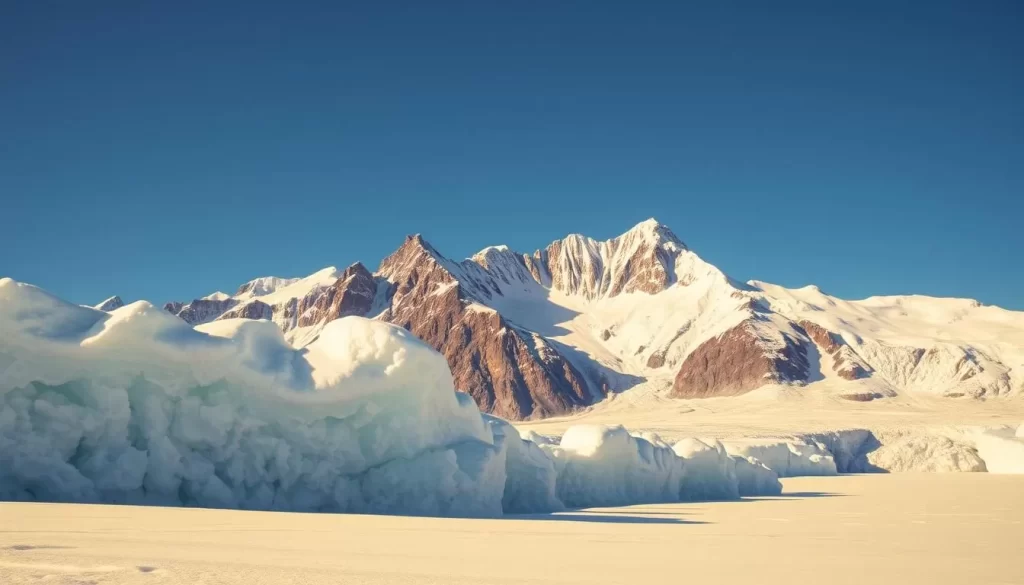
The Spegazzini Glacier is notable for its tall ice front, with walls reaching up to 440 feet (135 meters) above the water level of Lago Argentino, creating a truly imposing spectacle. Boat tours from Puerto Bandera allow you to visit these less-accessible glaciers on the same day.
In the northern section of the park, Glacier Viedma feeds into Lago Viedma, offering a striking contrast between the ice, the milky turquoise water, and the surrounding mountains. Unlike Perito Moreno, many of these glaciers are only accessible by boat, providing a different perspective and often a more peaceful experience away from the crowds.
| Glacier | Location | Notable Features |
|---|---|---|
| Upsala Glacier | Southern Los Glaciares | Largest in South America, rapidly retreating |
| Spegazzini Glacier | Southern Los Glaciares | Tallest ice front in the park, 440 feet above Lago Argentino |
| Glacier Viedma | Northern Los Glaciares | Feeds into Lago Viedma, striking contrast of ice and water |
Each glacier has its own unique characteristics, from dramatic ice caves to distinctive blue ice formations, and many provide opportunities to witness calving events. Visiting these glaciers is not just a tourist experience but also a chance to witness these magnificent natural wonders while they still exist in their current form.
Best Hiking Trails in Los Glaciares National Park
For adventure seekers, Los Glaciares National Park provides some of the most spectacular hiking experiences in Patagonia. The northern section of the park, near El Chaltén, is known as Argentina’s “Trekking Capital,” offering trails that cater to various skill levels and preferences.
Laguna de los Tres Trail
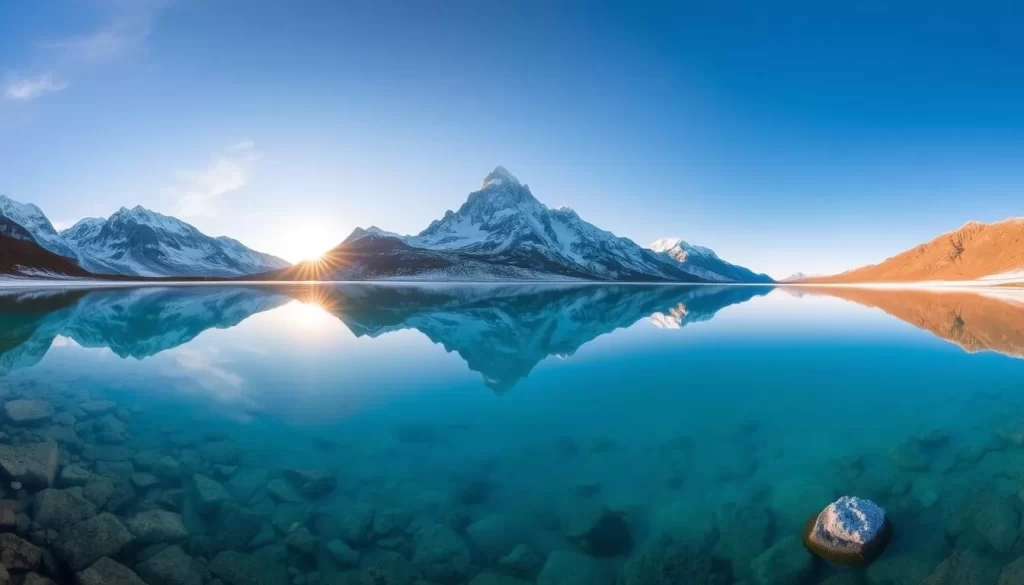
The Laguna de los Tres trail is a challenging but rewarding day hike that brings you face-to-face with the iconic Mount Fitz Roy. This 8-10 hour, 23km round-trip hike features a challenging final ascent with 400 meters of elevation gain in just one kilometer.
The panoramic views of Mount Fitz Roy, Poincenot, and Torre peaks make every step worthwhile. The granite spires of Mount Fitz Roy are reflected beautifully in the turquoise waters of the lagoon.
Laguna Torre and Mirador Maestri
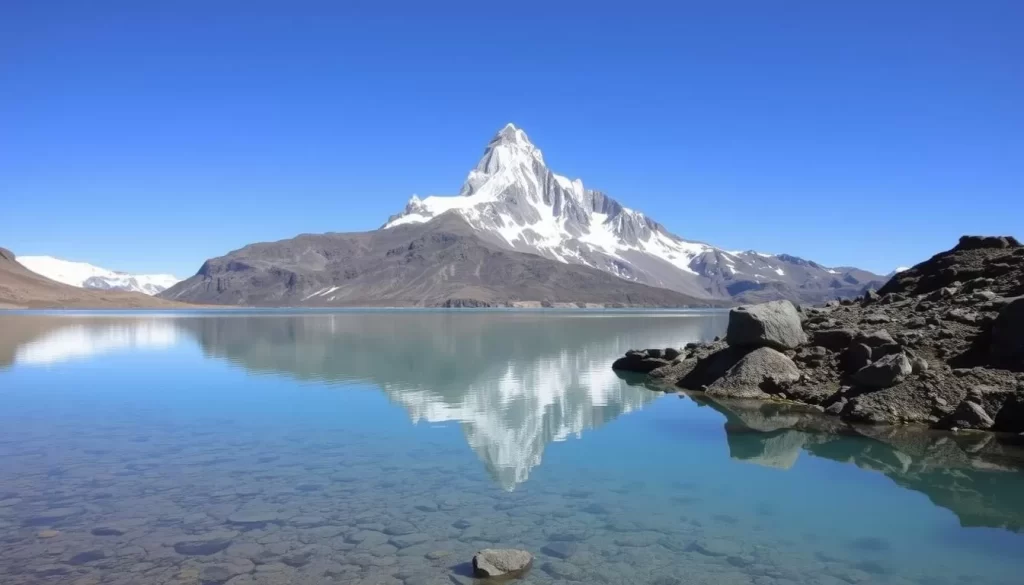
The Laguna Torre trail offers a more moderate hiking experience, leading to a glacial lake with spectacular views of the needle-like Cerro Torre peak. This 20km round-trip hike takes around 5-6 hours to complete.
For an even more breathtaking experience, continue 2km further to Mirador Maestri for views of the Grande and Torre glaciers.
Mirador Los Condores and Las Aguilas
For those seeking an easier option, the Mirador Los Condores and Las Aguilas trails provide spectacular panoramic views with minimal effort. This 2-hour round trip from the El Chaltén ranger station offers opportunities to spot Andean condors soaring overhead.
Loma del Pliegue Tumbado
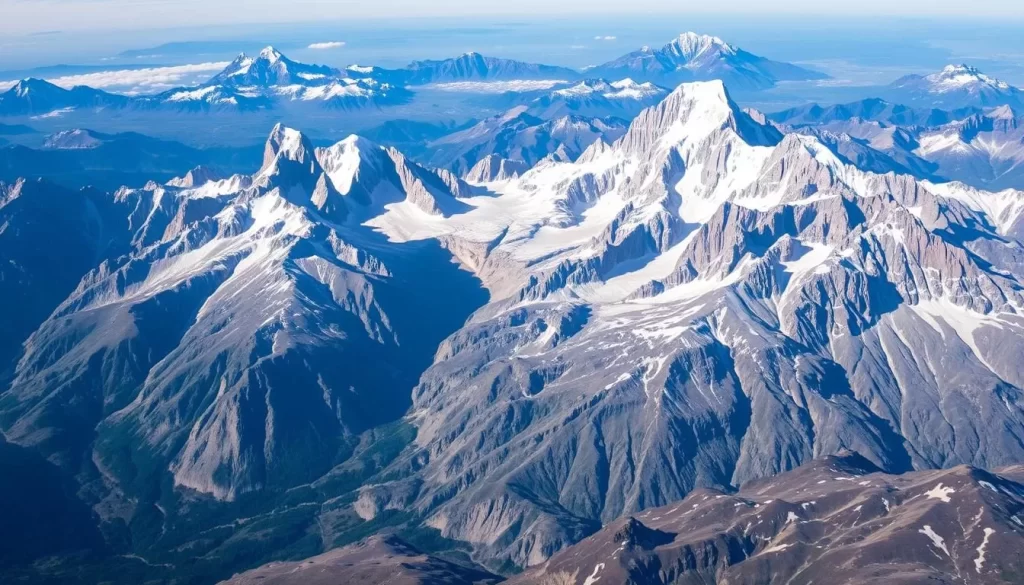
The Loma del Pliegue Tumbado hike offers a different perspective, climbing above the valleys for a bird’s-eye view of both Fitz Roy and Cerro Torre massifs in a single frame. This moderate 18km round-trip hike takes around 7-8 hours to complete.
Most trails in the El Chaltén area are well-marked, free to access, and can be hiked without guides, making this area perfect for independent hikers of various experience levels. The best time for hiking is during the summer months (December-February) when trails are generally snow-free and weather is most stable.
Always check weather conditions before setting out, as Patagonian weather is notoriously changeable. Pack layers, rain gear, and sun protection regardless of the forecast.
Adventure Activities in Los Glaciares
Adventure awaits in Los Glaciares National Park, where you can experience the thrill of kayaking, rafting, and climbing. The park offers a diverse range of activities that cater to different interests and adventure levels, ensuring that every visitor has a unique and exhilarating experience.
Kayaking Among Icebergs
Explore the icy waters of Los Glaciares National Park by kayaking among the icebergs that have calved off the glaciers. Guided tours are available for all experience levels, providing spectacular photography opportunities and an intimate connection with the icy environment.
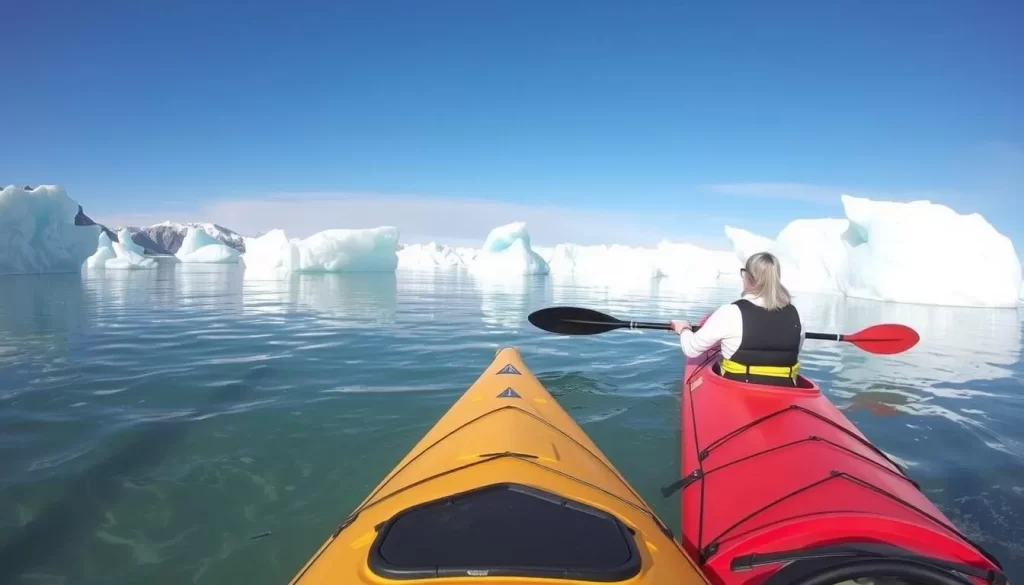
Rafting on Patagonian Rivers
For those who enjoy whitewater rafting, the rivers in Los Glaciares National Park offer exciting adventures. You can raft on the Santa Cruz and De Las Vueltas rivers, navigating through Class II-IV rapids surrounded by the park’s stunning scenery.
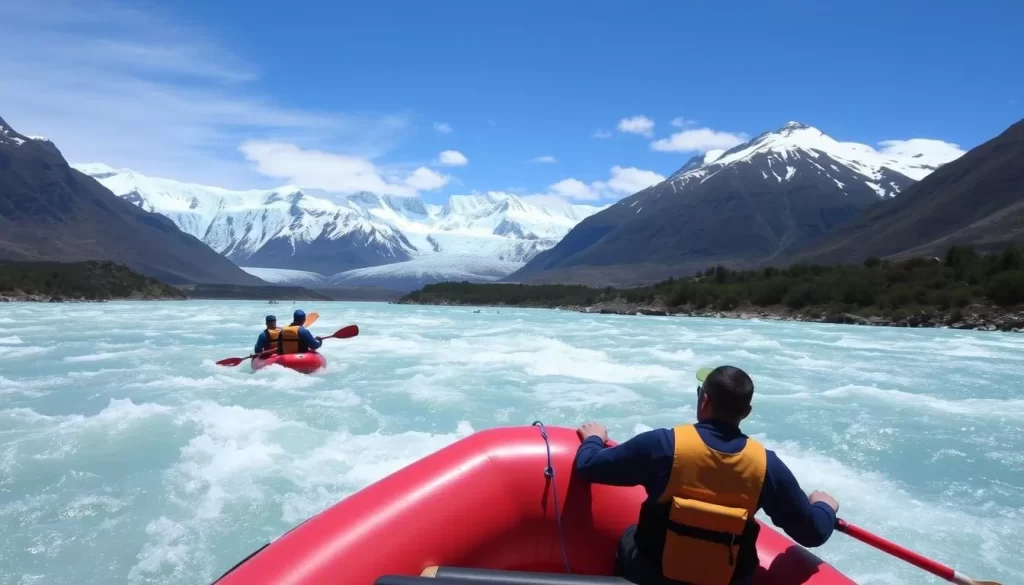
Mountaineering and Climbing
Los Glaciares National Park is a haven for mountaineering enthusiasts, with iconic peaks like Cerro Torre and Mount Fitz Roy offering challenging climbs. For less experienced climbers, there are also opportunities for glacier climbing on peaks like Cerro Vespignani.

Most adventure activities in Los Glaciares require guides and special equipment. It’s essential to book with reputable companies that prioritize safety and environmental responsibility to ensure a safe and enjoyable experience.
Unique Experiences in Los Glaciares
Immerse yourself in the untouched beauty of Los Glaciares through its unique experiences. Los Glaciares National Park offers several unique experiences that go beyond the typical tourist activities, allowing you to connect more deeply with the Patagonian landscape and culture.
South Patagonian Ice Field Expedition
For the ultimate adventure, join an 8 to 10-day expedition of the South Patagonian Ice Field. During such an expedition, you’ll climb and sleep on glaciers, hike across the ice field to Cerro Torre, Paso del Viento, Cerro Huemul, and back to El Chalten. These guided journeys take you across one of the world’s largest ice fields outside the polar regions, where you’ll camp on glaciers and experience a pristine wilderness few travelers ever see.
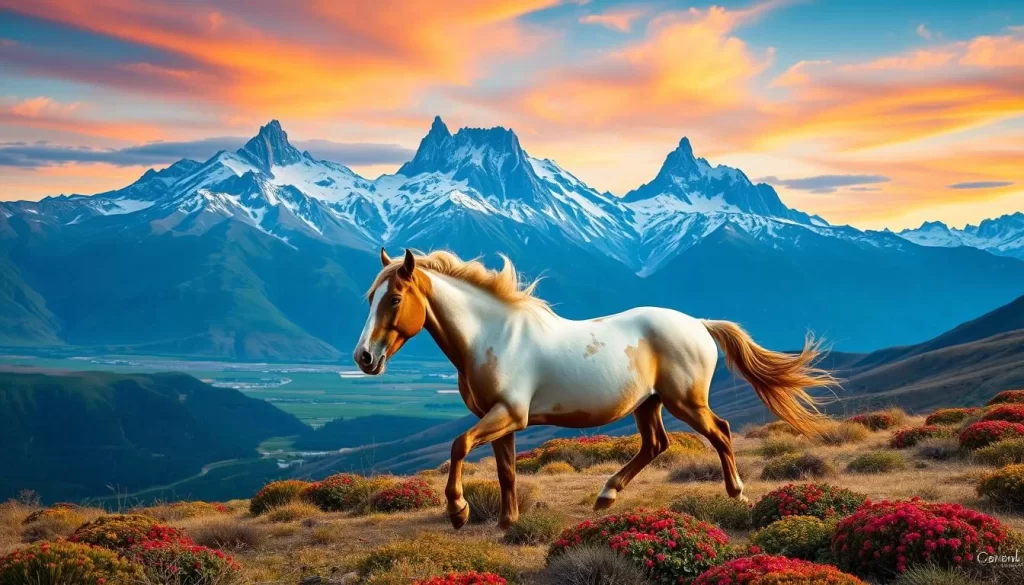
Horse Riding Through Patagonian Landscapes
What better way to visit hard-to-reach places than on the back of a horse? Unlike a bicycle, a horse doesn’t need a road. Explore the landscapes from angles that are seldom seen, visit hidden glaciers and lakes, and see animals that roam further away from the crowded places. Horse riding tours provide access to remote areas of the park that would be difficult to reach on foot, following the traditions of the Patagonian gauchos who have traversed these landscapes for generations.
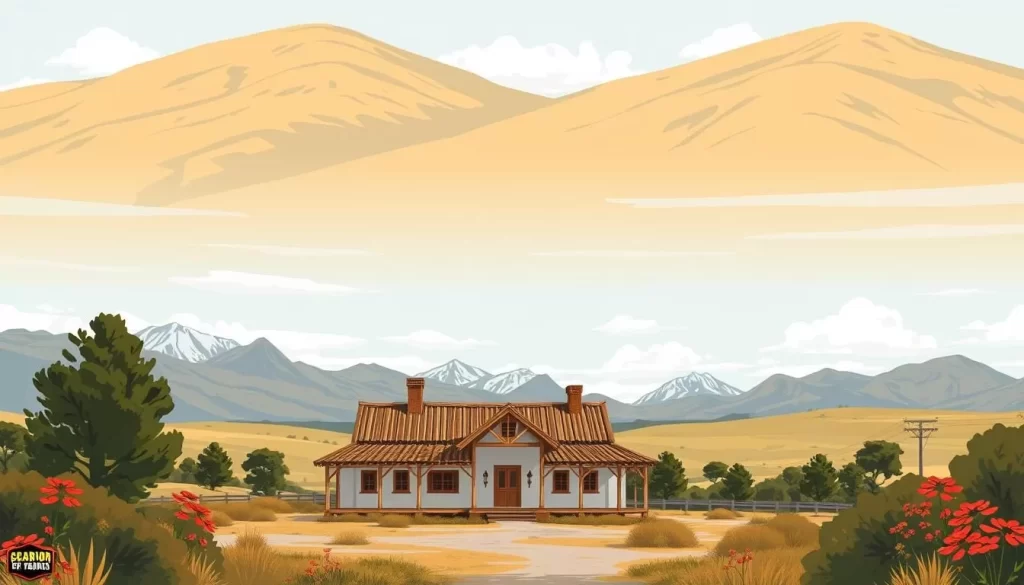
Visiting a Traditional Estancia
Learn about the life and work of the original Patagonian gauchos or cowboys by visiting or actually staying in an estancia. Whether you go on a day trip to the estancia or stay the night there, you’ll learn how the gauchos go about their day and care for the farm. At these working ranches, you can observe traditional sheep shearing, enjoy horseback riding with gauchos, and savor authentic Patagonian asado featuring locally raised lamb cooked over open flames.
Wildlife and Nature Photography
Capturing the essence of Patagonia, Los Glaciares National Park is a treasure trove for photographers seeking to snap the region’s unique wildlife and breathtaking vistas. As you explore this vastnational park, you’ll discover a diverse array of subjects to capture, from majestic landscapes to fascinating wildlife.
The park is home to a wide variety of wildlife, including guanacos, pumas, Andean condors, and the endangered huemul deer. TheAndean condor, with its impressive wingspan of up to 10 feet, is a thrilling sight, especially at the Mirador Los Condores viewpoint where these birds can be seen soaring on thermal currents. Guanacos roam the Patagonian steppe, particularly in the eastern sections of the park.
For photographers, the besttimefor capturing wildlife is during dawn and dusk when animals are most active. The park’s diverse avifauna, including woodpeckers, caracaras, and flamingos, offers endless opportunities for bird photographers.
| Photography Subject | Best Time | Tips |
|---|---|---|
| Wildlife (Guanacos, Pumas, Huemul) | Dawn, Dusk | Use telephoto lenses, be patient |
| Landscape (Glaciers, Mountains, Lakes) | Golden Hours (Sunrise, Sunset) | Use wide-angle lenses, polarizing filters |
| Birds (Andean Condors, Woodpeckers) | Anytime, but condors are best during thermal currents | Anticipate behavior, use appropriate lenses |
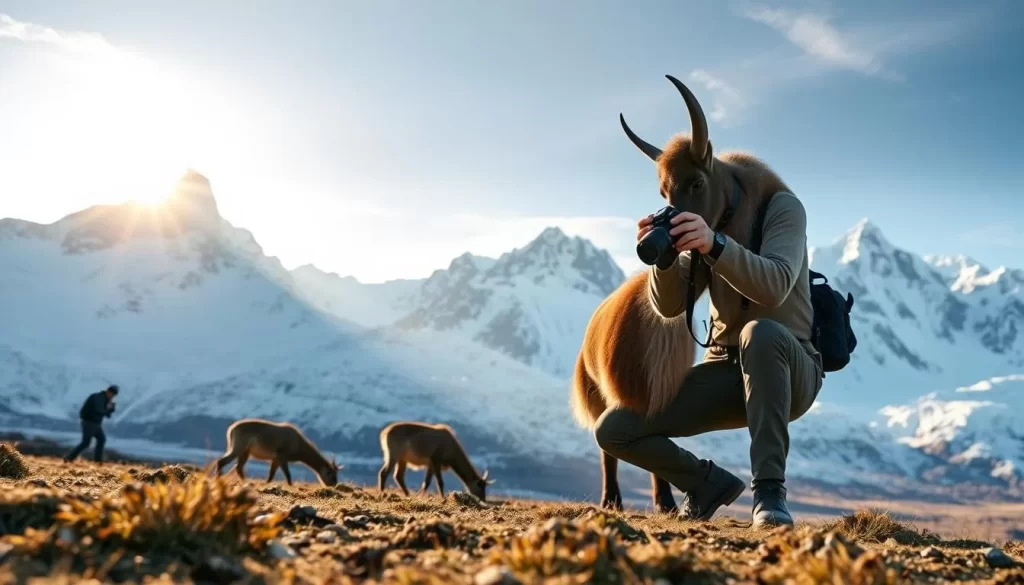
To make the most of your photography experience, consider packing a variety of lenses and accessories, such as polarizing filters to enhance the vibrant colors of the glacial lakes and reduce glare onwater. The ever-changingviewsandtimeof day offer countless opportunities to capture the beauty of thisworld-renownedareawithin Los GlaciaresNational Park.
Where to Stay When Visiting Los Glaciares

To experience the breathtaking beauty of Los Glaciares, you’ll need to choose between El Calafate and El Chaltén as your base town. El Calafate is the primary choice for visiting the southern section of the park, including the famous Perito Moreno Glacier.
El Calafate offers a wide range of hotels and accommodations, from luxury options like Xelena Hotel & Suites and Posada Los Alamos to budget-friendly hostels such as America del Sur and Hostel del Glaciar. The town’s picturesque setting, with its wooden architecture and mountain views, resembles a Swiss alpine village, but be prepared for higher prices due to its popularity and remote location.
In contrast, El Chaltén is a smaller, more rustic town that caters primarily to hikers and climbers. It offers a selection of hostels, cabins, and boutique hotels. Popular options include Destino Sur Hotel & Spa for luxury, Hosteria Senderos for mid-range, and Rancho Grande or Patagonia Hostel for budget travelers.
It’s essential to book in advance, especially during the high season (December-February), as the limited options in both towns fill up quickly. Consider the location of your accommodation in relation to your planned activities to make the most of your visit to Los Glaciares National Park.
Tips for a Successful Visit to Los Glaciares National Park
To make the most of your visit toLos Glaciares National Park, it’s crucial to be well-prepared. The park’s vastness and unpredictable weather can significantly impact your experience.
Proper planning is essential, as weather conditions can change rapidly, and distances between attractions are significant. You should pack for all weather conditions, regardless of the season, as Patagonia is known for experiencing four seasons in a single day. Waterproof outer layers are particularly important.
It’s also recommended to bring Argentine pesos in cash, even if you plan to use credit cards, as card machines at the park entrance and in remote areas can be unreliable. Cash is also needed for tips and small purchases.
Allowing enough flexibility in your itinerary is crucial to account for weather delays. If possible, plan an extra day or two in El Calafate in case your scheduled day for visiting Perito Moreno has poor visibility or heavy rain.
Some key tips for a successful visit include booking popular activities like ice trekking on Perito Moreno in advance, especially during high season (December-February), and considering hiring a local guide to enrich your experience.
- Start your days early, particularly when hiking in the El Chaltén area.
- Invest in good quality hiking boots if you plan to hit the trails.
- Respect park regulations and practice Leave No Trace principles.
- Don’t try to see everything in one trip; it’s better to fully appreciate fewer locations.
By following these tips, you can ensure a memorable and enjoyable trip to Los Glaciares National Park.
Conclusion
Los Glaciares National Park is more than just a destination; it’s an experience that will leave you in awe of nature’s grandeur. As you explore this Patagonian wonderland, you’ll be treated to a diverse array of landscapes and activities that cater to all types of travelers.
From the thunderous calving of the Perito Moreno Glacier to the serene beauty of Mount Fitz Roy at sunrise, the experiences you’ll have in Los Glaciares National Park will likely rank among your most treasured travel memories. Whether you’re a casual sightseer, an adventure seeker, or a nature lover, the park offers something for everyone.
While planning a trip to such a remote area requires effort and investment, the rewards of visiting Los Glaciares National Park far outweigh the challenges. Remember that the park changes throughout the seasons, offering unique perspectives and experiences depending on when you visit.
As you plan your departure, you’ll likely already be thinking about when you can return – Los Glaciares has a way of capturing visitors’ hearts and calling them back to experience more of its wonders. Take your time, respect the environment, and prepare to be humbled by one of nature’s greatest masterpieces.
The above is subject to change.
Check back often to TRAVEL.COM for the latest travel tips and deals.